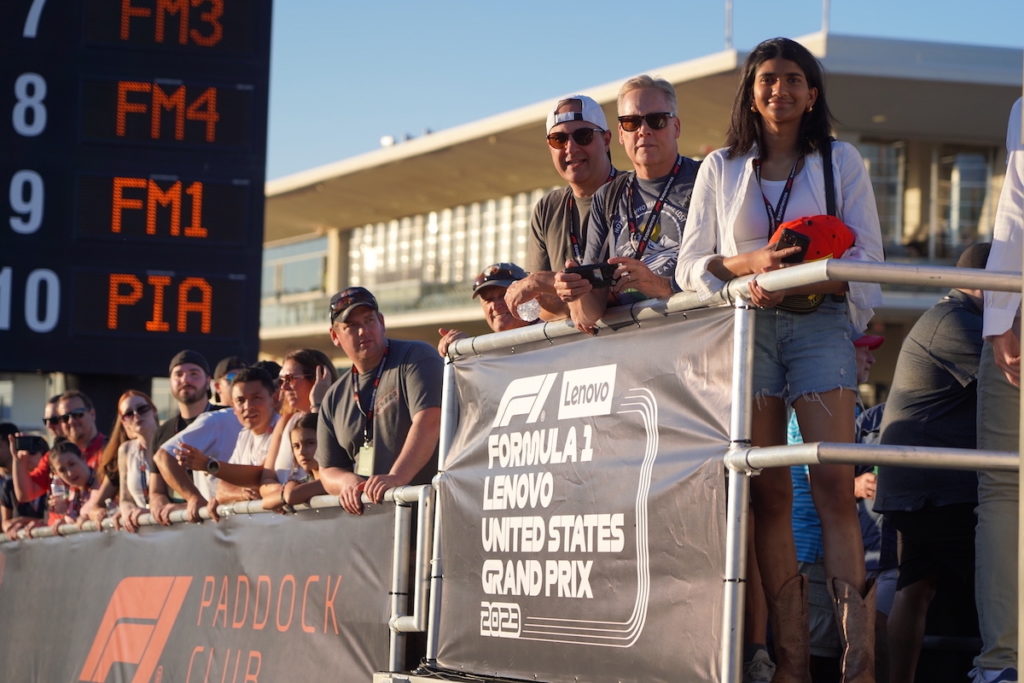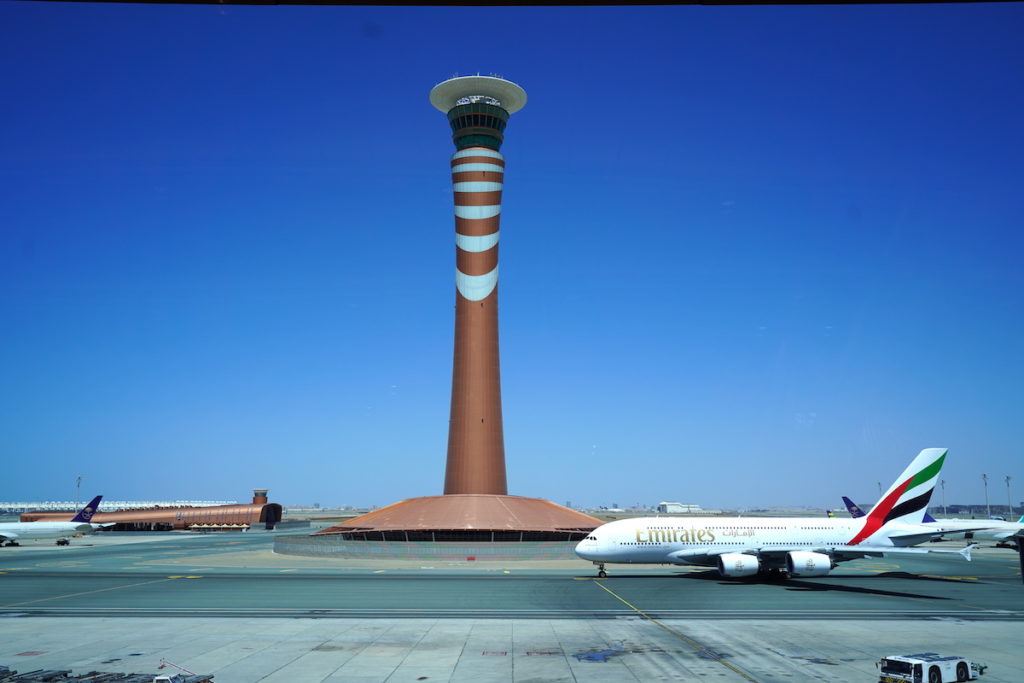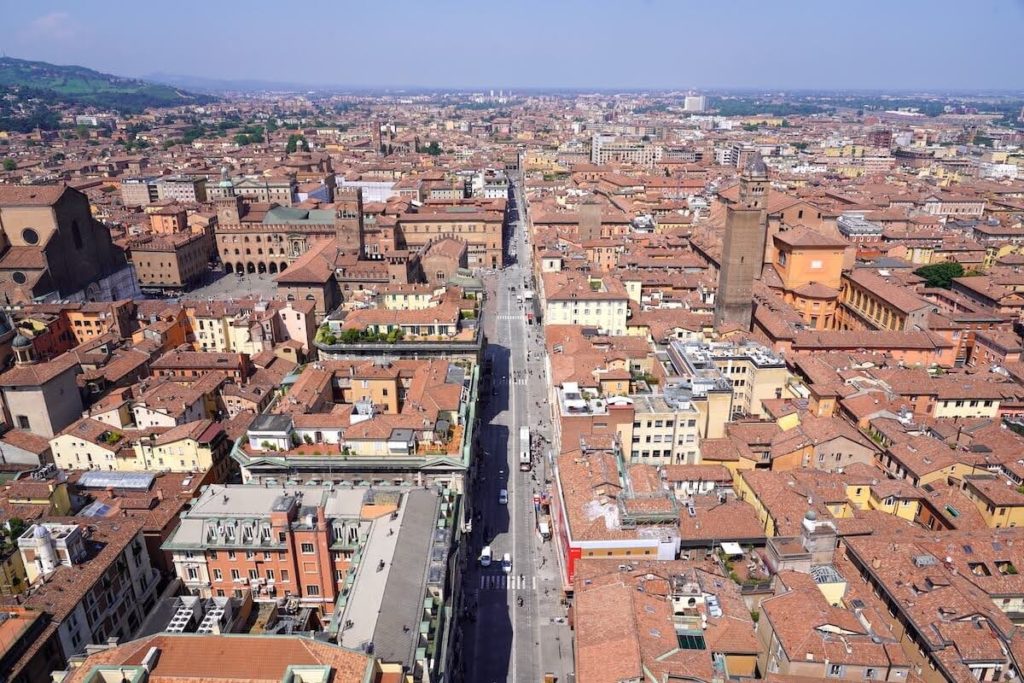Everything you need to know about attending your first F1 race in 2026. How to buy tickets, book flights, reserve accommodation & maximize your trackside experience.
This post contains affiliate links. We may receive a commission if you make a purchase after clicking on one of these links
Should I Book My F1 Trip Well in Advance?
The answer to this question is a resounding YES. Thanks in part to the hugely popular Netflix series ‘Drive to Survive,’ interest in Formula 1 races remains close to an all-time high. Tickets for the most popular races sell out well in advance. Tickets are also going on sale earlier than ever. If you don’t want to pay well over the odds for tickets on the secondary market, we recommend buying your tickets as soon as you can. Tickets are already on sale for more than half of the planned 24 races in the 2026 F1 season. Another reason for increased interest is the introduction of new technical regulations for the sport in 2026.

Which Race Should I Attend?
The answer to this question depends on a lot of factors and what’s most important to you. To make your first F1 experience easier logistically and cheaper (usually), attending the race in your home country or in a nearby country is a good idea.
From historic circuits in beautiful rural locations (Austria, Belgium) to city park circuits (Australia, Canada, Italy, Mexico City) and downtown street circuits with night races (Singapore, Las Vegas), there’s something for everyone on the 2026 F1 calendar! Maybe you want to check out some big-name concerts, attend one of the six races hosting an F1 sprint race weekend or plan your race as part of a longer holiday? Use our guides and resources to help you decide which race you want to attend and to help plan your trip. Check out all of our 2026 Formula 1 travel guides.
Organized F1 Tour or DIY?
Both options have their pros/cons, and appeal to different types of fans. The biggest considerations are time and money. If you want the complete package with everything organized for you, and are prepared to pay for it, choose an organized tour. You’ll find F1 travel companies in major markets who specialize in organizing tours to F1 races. Some will organize flights, hotels and even circuit transfers. If you are on a budget and comfortable with independent overseas travel, then go for the DIY option, using our detailed travel guides to plan your trip.

How to Get F1 Tickets?
After you have decided to attend a race, choosing which tickets to buy – and where to buy them – is one of your key decisions. Some race organizers handle their own ticket sales via an official channel (such as the circuit website), while others outsource sales to ticket agencies. The quality of customer service, information on available tickets and purchase process can vary in efficiency, depending on the destination. We co-operate with one of the biggest and most reputable F1 ticket companies, Grand Prix Tickets (GPT), who supply tickets to every race on the current Formula 1 calendar. We have many satisfied buyers who can vouch for their honesty and professionalism.
We also recommend F1’s official travel and experience partner, F1 Experiences, who offer grandstand seats or access to trackside hospitality suites with a range of exciting trackside activities that will get you closer to Formula 1. F1 Experiences also offers accommodation and circuit transfers, which take away a lot of stress for the novice F1 traveller.


How Much Does it Cost to Attend an F1 Race?
Formula 1 has never been a cheap spectator sport, but it has become even more expensive in recent seasons due to increased demand. The cost of flights and accommodation have also been rising since the pandemic. The three races held in the USA – in Miami, Austin & Las Vegas – are amongst the most expensive to attend on the calendar. But there are still affordable destinations, especially those in Europe which offer 3-day general admission tickets for under $150 USD, as well as cheap trackside camping.
Don’t discount traveling to races outside your home country; even with additional costs for flights, it still may be cheaper than attending your home race. This can be true for British fans traveling to some European races and also for American fans travelling to either Canada or Mexico.
As always, it pays to book well in advance. Race tickets are often discounted when sales begin, and you will have a better choice of accommodation and flights. A typical minimum expenditure for going to a full F1 race weekend (Friday-Sunday) including tickets, hotel and spending money will set the average fan back around $500-1000 USD, not factoring in the cost of travel. But with a huge range of tickets to choose from – and much higher prices at some races – it’s of course possible to spend a lot more, especially if you choose to experience trackside hospitality. Check the “Budget Planner” posts in our guides for more information about the cost of attending each race.

Getting There
The majority of F1 circuits these days are located in or close to major cities, which makes booking flights easier. If you wish to save some money when flying to a race, particularly in Europe, don’t automatically choose the closest airport to the city. There may be other airports close by where flights are much cheaper. Budget airlines are present in most large markets serving Formula 1 around the world. We recommend using a site such as Skyscanner to research all the options, but book direct with the airline – this will give you greater protection in case of having to change or cancel your plans.
If you have more time and flexibility in your itinerary, don’t forget to check other means of travel such as train, self-drive, bus or ferry – particularly in Europe. More information about getting to the circuits on the current Formula 1 calendar can be found in the “Getting There” posts in our guides.


Where to Stay?
Camping, which is still popular at many races in Europe, is the cheapest form of accommodation available. Staying next to the track is a great way to immerse yourself in a weekend of Formula 1, and also saves you time and money. Read More: 2026 European F1 Camping Guide.
Another budget option is to stay in a hostel. Most F1 cities around the world offer hostel-style accommodation, which is particularly suited for the budget solo traveler or younger F1 fan. Be ready to share your room with other race fans and don’t expect luxury. Budget hotels also appeal to many fans. Be aware of location though, as you don’t want to find a great deal only to realise that you are nowhere near public transport and need to spend a fortune on taxis to get to and from the circuit.
There is no shortage of mid-range and luxury hotel options for F1 travelers in host cities around the world. Many F1 circuits are located close to large cities, so a good trade-off is to stay where there are better accommodation options, but with a longer daily commute to and from the circuit. Don’t forget that large accommodation booking sites such as Booking.com often allow you to reserve a room with no down payment, and with free cancellation if your plans change.

What to Pack?
Resist the temptation to pack too much! If you have forgotten something, it’s normally quite easy to buy it at your destination. Don’t forget to leave some room in your bag for F1 merchandise and gifts for yourself, family and friends. Make sure you pack comfortable clothing and practical shoes which you have already worn in, as most circuits require you to do a lot of walking over the weekend.
Research the likely weather conditions at the race you will be attending and pack accordingly. Don’t forget to take along a decent camera to capture your experience. Make sure you have a spare memory card or at least have the ability to download photos after each day, so you don’t run out of space. A power bank is also a necessity for your mobile phone at the track.
Before You Arrive
Do your research before arriving in the host city for the race. Organize comprehensive travel insurance to cover your stay. Do you need to organize a visa in advance? Find out how to get to your hotel and how to get to the track. Have a printed map or save some relevant Google Maps on your smart phone before you leave. Buy a local SIM card, e-sim or arrange a data package with your provider in advance so that you don’t have to rely on WiFi.
Circuits where F1 races are held are often some distance from where you are going to be staying, so it pays to know in advance how you are going to get from your hotel to the track and back each day. The full race weekend schedule is normally published around 4-8 weeks before race weekend. Be sure to check it carefully and plan your travel so you won’t miss any of the action. For example, it may be worth arriving earlier to participate in the public pit lane walk, which many circuits hold on Thursday afternoon.

At the Track
Don’t forget your tickets! Most are now electronic, sent to you via email a few weeks before the race. Whilst it’s normally possible to show your ticket on your mobile phone, we recommend having a printed copy as well. Some tickets are also nominative, so you may also be asked to show your ID card.
Before you leave for the track each day, pack a small backpack with essentials such as a rain jacket or poncho, hat, umbrella, sunscreen and camera . You’ll also be using your phone a lot, so make sure to bring a power bank. If you are on a budget, take along your own food and drink as trackside prices are generally high. Most circuits allow fans into the circuit with their own food and at least one plastic water bottle (glass items are generally prohibited). Detailed information on what to expect at the track is included in our “Trackside” posts.
Once at the track, you will need to find your entry gate and get yourself oriented. You will often receive a map with your ticket. If you are taking public transport, be aware that it can be very crowded at peak times; if you don’t want to be packed in like a sardine on the train or bus home, delay your exit from the circuit to avoid the crowds.
One of the best experiences of the whole weekend is the so-called “track invasion”, when fans are given the opportunity to walk down the pit straight after the end of the race and watch the podium celebrations. At most races, the track is normally opened to fans just minutes after the end of the race, so if you want a good view of the podium, get close to the finish line as the end of the race approaches.

Go With the Flow…
The quality of the trackside organization varies wildly on the calendar. Some races are super well organized (Australia, Austria, Netherlands, Singapore, to name a few) while others are more chaotic and a little disorganized (Spain, Italy, for example). Some races attract very large attendances (Australia, Britain, USA, Mexico City) and involve lots of queuing and patience, while others are much more sparsely attended and relaxed, especially in Bahrain, Saudi, Azerbaijan and Qatar.
Above all, have fun and go with the flow! Hundreds of millions of fans watch F1 on TV each year, but only a few million are lucky enough to see the sport live. As well as an amazing sensory experience, F1 circuits offer an awesome atmosphere and the opportunity to meet like-minded fans from around the world.






















